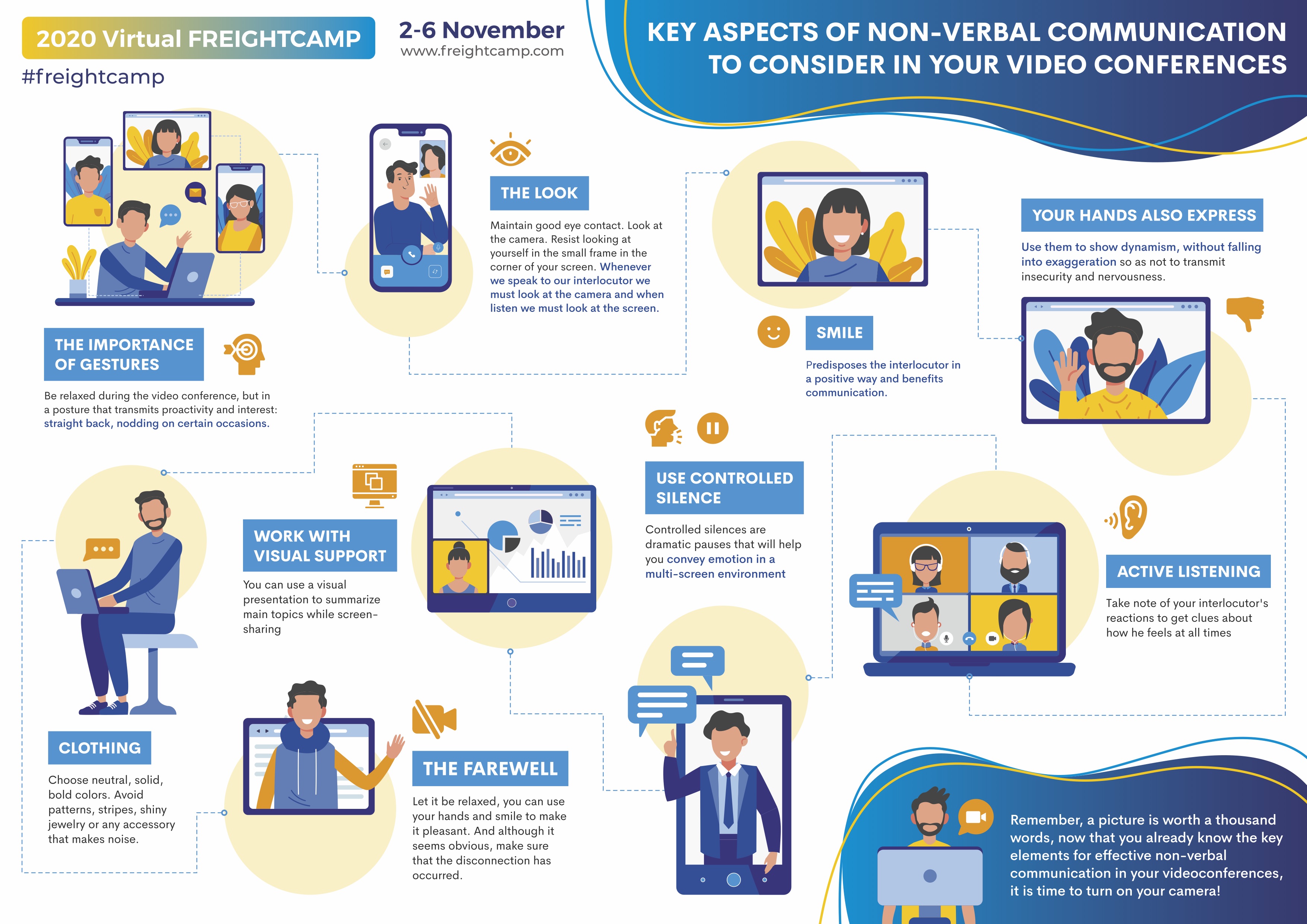
Key aspects of non-verbal communication to consider in your video conferences
In a previous e-book we explained 3 basic elements to achieve a 100% effective videoconference: technique, context and person. In this post and infographic, we will deepen into the person, specifically elements of non-verbal communication that are essential for your message to be reached correctly:
- The importance of gestures: inappropriate postures, grimaces, yawns … can transmit to the interlocutor a feeling of lack of interest on your side. It is important to be relaxed during the videoconference, but in a posture that transmits proactivity and interest: with a straight back, nodding on certain occasions to make your counterpart feel that he/she is being heard and that communication is positive.
- The look: Maintain good eye contact. It is important to look at the camera so that the interlocutor perceives your interest. You will achieve this by placing the frame in which the listener appears near your camera, and resist looking at yourself in the small frame in the corner of your screen. In addition, frowning or arching eyebrows transmits strange or mistrust, so you should avoid it. In summary, whenever we speak to our interlocutor we must look at the camera and when listening we must look at the screen.
- Smile: transmits closeness, predisposes the interlocutor in a positive way and benefits communication, provided that it is not out of context or that it seems too forced. Remember to avoid negative gestures like yawning etc.
- Your hands also express: framing limits the visualisation of the expression of arms and hands, despite this, it is still important to use them to show dynamism, without falling into exaggeration so as not to transmit insecurity and nervousness. Crossing your arms, for example, conveys that you are closed to communicate.
Your hands should be used to support your speech, but they should not cover your face and you should be especially careful not to bring them too close to the lens.
Negative gestures can reveal negative emotional states such as nervousness, anxiety, frustration, etc. Therefore, try to offer an image that denotes tranquility, such as putting your hands together, without using gestures that show aggressiveness and are too abrupt. - Active listening: take note of your interlocutor’s reactions to get clues about how he/she feels at all times: if crossing arms, if not looking at the camera, if being distracted with other things, etc. These are signs that your listener has lost attention in your speech and therefore you should try to get it back.
- Use controlled silence: you will dominate the conversation. Take breaks. Controlled silences are dramatic pauses that will help you convey emotion in a multi-screen environment and keep you from falling into monotony.
- Work with visual support: if the listener only pays attention to your voice or text, they will end up disconnecting if the meeting is extended. Depending on the subject or purpose of the meeting you can use a visual presentation to summarize main topics while screensharing.
- Clothing: choose neutral, solid, bold colors. Avoid patterns, stripes and plaids that can cause camera distortion. Also, don’t use shiny jewellery or any accessory that makes noise when you move. If you wear glasses try to minimize the glare by increasing the size of the light source or finding a position/angle for your lights that eliminates the reflection.
Use powder or blotting papers to control a shiny face. Keep a brush or comb and a small mirror in your desk drawer for quick touch ups during breaks. - The farewell: let it be relaxed, you can use your hands and smile to make it pleasant. And although it seems obvious, make sure that the disconnection has occurred, since otherwise, if you think you have disconnected but haven’t, the experience can play a trick on you.
Remember, a picture is worth a thousand words, now that you already know the key elements for effective non-verbal communication in your videoconferences, it is time to turn on your camera!




